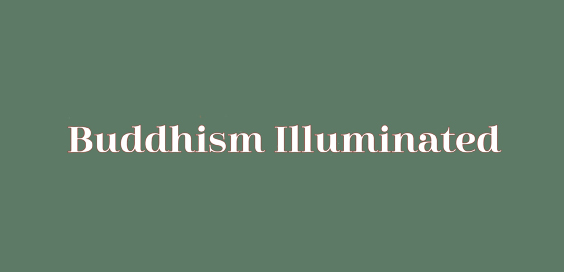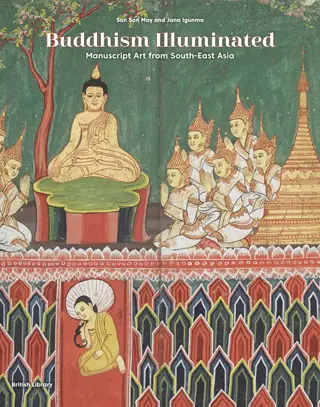Buddhism Illuminated: Manuscript Art from South East Asia by San San May; Jan Igunma – Review

By Barney Bardsley
The rich and venerable legacy of Buddhist thought and philosophy seems to hold an ever-increasing fascination for western civilisation – with its fast and frenetic ways. The perceived quiet reflectiveness of this ancient religion is a welcome antidote for the over-cerebral nature of our high-tech, speeded up, Americanised minds.
This book is less about the meaning of Buddhism, more about its history, and one strand of history in particular. There are two major Buddhist pathways coming from the East: Theravada Buddhism, which uses the Pali language, and is born of South East Asia, and Mahayana Buddhism, which uses Sanskrit, and pertains to Tibet, China and Japan.
The British Library has one of the world’s finest collections of Theravada buddhist manuscripts, in particular those of Thailand and Burma, and it has now released some 18th and 19th century treasures, in the form of a sumptuous arthouse book, which is an absolute feast, for eyes and soul.
Buddhism Illuminated explains, in intricate details, the significance of these archived manuscripts, manifested usually in folding book form, and laid out in fan like fashion, on mulberry paper, or palm leaf, then wrapped in cloth, and placed in ornate boxes for holy and safe keeping. It also puts the writings into historical context, and this historical narrative is both fascinating and eloquent.
 “Glowing”
“Glowing”
However, it is the illustrations from the manuscripts, reproduced here with exquisite care, which are the real stars of the show. Glowing in ambers, golds, reds and greens, the depictions of the life of the Buddha gleam from every page, as he is surrounded by followers in flowing robes; by animals and fishes; by abundant trees and landscapes, and blue and turquoise skies. They make the story of his life and teachings – whether or not you “believe” in Buddhist philosophy – utterly compelling and transporting.
The book sets out, in six chapters, to tell the story of Buddhism, seen through the lens of the Theravada tradition – often considered the more ascetic and austere of the two diverging paths. It explains that the Buddhist temples, where these manuscripts would have been housed, remain crucial places in the life of the local people: centres of education, politics and healthcare, as well as religious teaching.
According to the Pali canon, Gautama Buddha was born in the 6th century BC. Apparently there were other Buddhas before him, some human, some animal – and there will be more in his wake. Another Buddha will reincarnate at some future date – perhaps in human form, perhaps not. One of the loveliest illustrations in the book shows a Burmese depiction of the Buddha as a golden stag, living peacefully among his herd of deer, in the forest.
“Exquisitely beautiful”
However, the most significant Buddha for our age was born Siddhartha: a rich Indian prince, forbidden from leaving his palace by his father the king, lest he see the reality of life, and fall into disillusion. But we can none of us protect our children… The intelligent and curious Siddhartha leaves the palace grounds, despite his father’s best efforts to keep him confined. He sees four signs: an old man (the truth of ageing); a sick man (the truth of suffering); a corpse (the reality that we all must die); and an ascetic (pointing the way to self-examination, the soul’s journey). Rather than scuttling back into the palace in fear, Siddhartha leaves his rich heritage forever, and sets out on a 45 year quest, to find out how to transcend this cycle of suffering, and become enlightened.
In the book, we follow the Buddha from birth to his death at 80 years old, and beyond –with treatises on the Dharma – his teachings; the Sangha – his community; Karma – the notion of cause and effect; and Punna – the observation of a kindly way of life. Do no harm. And through this journey, the accompanying imagery teems before our eyes, in a visual tapestry that is both spiritual, and very earthy. But chiefly: exquisitely beautiful.
Buddhism Illuminated is an expensive book, and a niche one, too. But it is exceptional. And I feel moved by its gentle radiance.
‘Buddhism Illuminated: Manuscript Art from South East Asia’ by San San May; Jan Igunma is published by The British Library, £50 hardback, ISBN: 9780712352062









